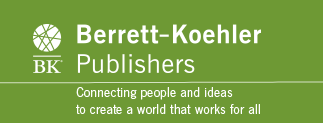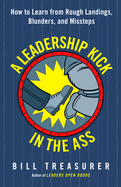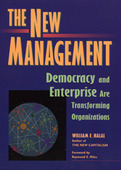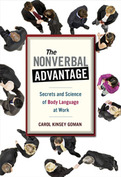Latinos and Latinas will account for a third of our workforce by 2050-yet they make up only 5 percent of senior roles in corporate America. Dr. Robert Rodriguez and Andrés T. Tapia call this low percentage of Latino and Latina corporate executives today the “5 percent Shame.”
Inspired by Price M. Cobbs's seminal work on the secrets of successful Black leaders, this book seeks to understand the impact on Latinos and Latinas of the external forces of conscious and unconscious biases and of the internal forces of whether to assimilate or double down on their cultural identities in their quest to get ahead.
The second edition features a new foreword by Henry Cisneros, former secretary of the Department of Housing and Urban Development, as well as updated statistics and graphs to represent how America's career landscape for Latinos has and has not changed and how to ensure Latinos can rise to their fullest potential.
Using insights from in-depth interviews with twenty highly successful boomer Latino and Latina executives and focus groups with dozens of Gen X and millennial leaders, the authors have captured lessons about how these individuals chose their career paths, addressed challenges, and seized opportunities. The discussions are interpreted through the lenses of the authors' different personal experiences as Latino leaders in corporate America and synthesized as a guide for future leaders.
—Jim Kouzes, coauthor of the bestselling and award-winning The Leadership Challenge and Dean's Executive Fellow of Leadership, Leavey School of Business, Santa Clara University
Even the best leaders—in fact, most of the best leaders—start out as decidedly bad ones. And sooner or later they reach a moment of reckoning that leadership expert Bill Treasurer calls the leadership kick in the ass. When it happens, it feels like it's all over. But Treasurer says that with the right attitude, that kick can be a new beginning. Based on his work with thousands of leaders, this book reveals how to turn those ego-bruising events into the kind of transformative experiences that mark the paths of great leaders. As Steve Jobs famously said, “Getting fired was the best thing that ever happened to me.” This book is a survival guide, coach, and morale booster to help you use that kick to move forward instead of fall down. If you succeed, the next place you get kicked might be upstairs.
1998
o "Serving enterprises" make customers working partners in the creation of value
o "Knowledge entrepreneurs" form teams of self-managed internal enterprises
o "Internal markets" and "Corporate community" harness external forces to drive continuous change
o The power of "inner leadership" unites liberated workers, critical clients, and temporary business partners
o "Intelligent growth" offers strategic advantage that is ecologically benign
Illustrative examples, survey data, trends, anecdotes, and exercises offer original insights into the use of New Management principles. In addition, mini-case studies of MCI, Saturn, The Body Shop, Hewlett-Packard, Johnson & Johnson, Southwest Airlines, Home Depot, IKEA, Wal-Mart and other great companies illustrate vividly how creative managers design and lead organizations in an era of global competition, constant change, and empowered people. The author also analyzes critical issues, such as the nagging old conflict between profit and society, to provide managers a comprehensive, stimulating guide to where their craft is heading.
Halal argues that the transition to a New Management is almost inevitable because it is being driven not by altruism or even good leadership, but by the relentless advance of the Information Revolution. Only small entrepreneurial teams operating from the bottom-up can master today's exploding complexity, and gaining stakeholder support is now essential because a knowledge-based economy has made cooperation a competitive advantage. Rather than fussing over quick fixes, The New Management points the way toward more fundamental solutions to the massive changes that will confront all institutions as the transition to a knowledge society rolls on into the 21st century.
Carol Kinsey Goman combines the latest research and her twenty-five years of practical experience as a consultant, coach, and therapist in this fun and practical guide to understanding what you and the people you work with are saying without speaking. Cartoons, photos, entertaining anecdotes, and dozens of simple and enlightening exercises help readers gain control of the messages their bodies are sending so they can project a more accurate and compelling picture of who they really are to their colleagues, clients, and partners.
Though bureaucracy appears on almost every "biggest problems with business" list, most management books simply suggest ways to make it work better. This book shows how to replace bureaucracy with fundamentally different principles for organizing and coordinating work.
Gifford and Elizabeth Pinchot confront head-on the key organizational issues that are threatening the very existence of today's corporations. They assert that "bureaucracy is no more appropriate to the information age than serfdom was to the industrial era. Only freedom and community will work."
The Pinchots describe "intelligent organizations" that make full use of the intelligence of all employees. By developing and engaging the intelligence, business judgment, and wide-system responsibility of all its members, an organization can respond far more effectively to customers, partners, and competitors. The Pinchots provide a far-reaching guide to:
o establishing internal free markets
o liberated teams
o community in the workplace
o equality and diversity
o democratic self-rule
o multiple sources of authority
o limited corporate government
The Pinchots support the sweeping changes they propose with numerous examples of how these changes are already being implemented in such diverse organizations as AT&T, the Canadian National Railroad, DuPont, Russian entrepreneurial firms, Hewlett-Packard, and the U.S. Forest Service.
- Everyone complains about bureaucracy. Here's how to replace it with more humane and effective systems of organization
- From the authors of Intrapreneuring, one of the bestselling and most influential business books of the 1980s
- Originally published in hardcover as The End of Bureaucracy and the Rise of the Intelligent Organization
Innovation is an act of love-or at least it should be. Always. It is a gesture of empathy, respect, generosity, of one human being's devotion to another, writes Mauro Porcini at the beginning of this extraordinary book.
It is in part a memoir by one of the world's leading designers-the first chief design officer at both 3M and Pepsi. But even more, it is a manifesto for a genuine, authentic, and deeply humanistic approach to design, one that aims to create personal and social value first and financial and economic value afterward.
In every industry, new technologies have lowered the barrier to entry like never before. Either you design exceptional products or somebody will beat you to it. Porcini shows, through example after example and story after story, that the key to real, world-changing innovation is to put people first-not only the people we innovate for but also the people who lead the innovation process.
Putting people first requires what Porcini calls unicorns: people who are in love with people, who have a genuine fire in them to create meaningful solutions for actual human beings. In this book, he describes them, celebrates them, and details their superpowers so you can find them, hire them, grow them, and retain them.
Some are qualities you might expect-the ability to dream combined with the ability to execute. But when was the last time you heard an executive ask prospective hires if they were kind, optimistic, curious, or humble? Porcini uses his journey across startups and multinational corporations, through successes and failures, to create a handbook for modern innovators.






















